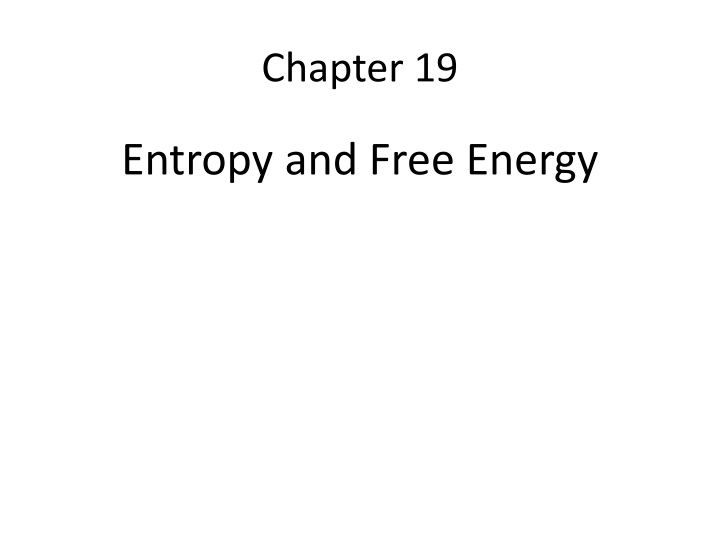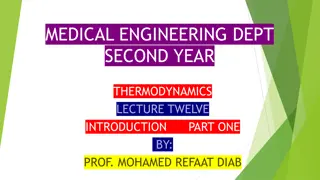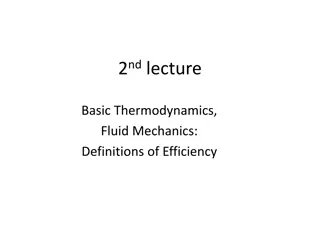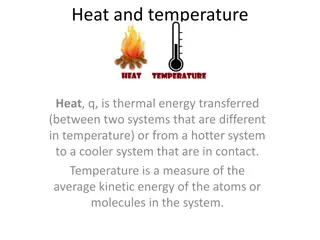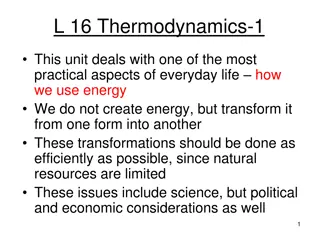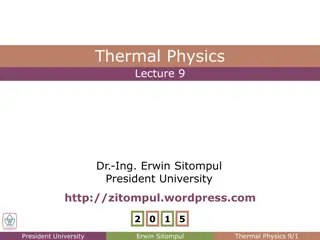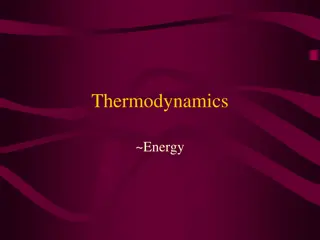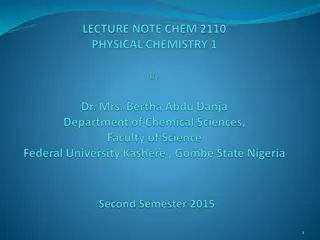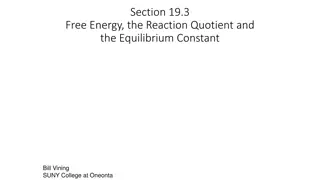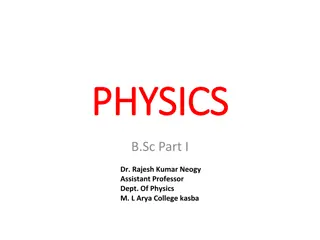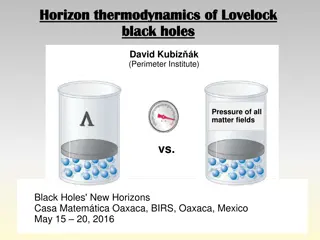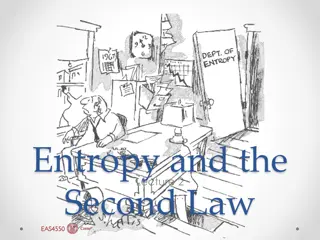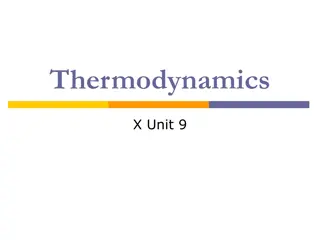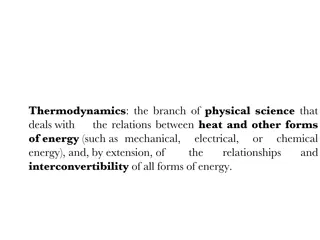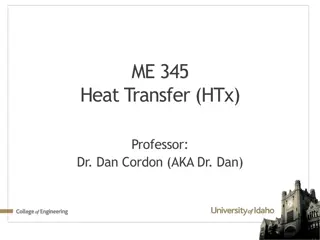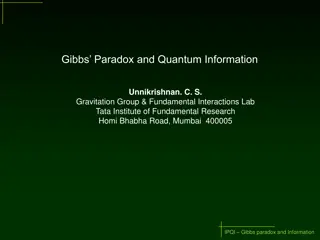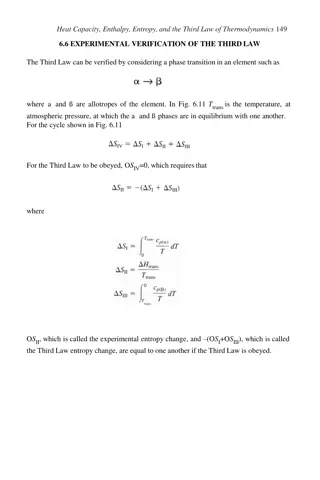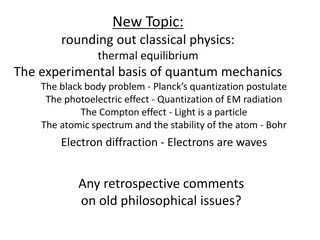Thermodynamics: Spontaneity, Entropy, and Free Energy
Definitions of spontaneous processes, entropy, enthalpy, and free energy in thermodynamics. Exploring the laws of thermodynamics, entropy changes in chemical reactions, and Gibbs free energy. Understand factors affecting entropy increase and calculations involved.
Download Presentation

Please find below an Image/Link to download the presentation.
The content on the website is provided AS IS for your information and personal use only. It may not be sold, licensed, or shared on other websites without obtaining consent from the author.If you encounter any issues during the download, it is possible that the publisher has removed the file from their server.
You are allowed to download the files provided on this website for personal or commercial use, subject to the condition that they are used lawfully. All files are the property of their respective owners.
The content on the website is provided AS IS for your information and personal use only. It may not be sold, licensed, or shared on other websites without obtaining consent from the author.
E N D
Presentation Transcript
Chapter 19 Entropy and Free Energy
Thermodynamics: Spontaneity, Entropy and Free energy Definitions: Spontaneous process: a process that can proceed without any outside intervention. Remember: Kinetics tells us about a rates of a reaction Entropy (S)- a measurement of the distribution of energy ( randomness ) of a system. Enthalpy (H)- the heat flow in a process occurring at constant pressure (no work performed) Free energy (G)- a thermodynamic function that relates entropy and enthalpy to spontaneity.
Law of Thermodynamics: 1stLaw: Energy in conserved (neither created nor destroyed in any process) 2ndLaw: the total entropy of the universe increases in any spontaneous process. 3rdLaw: the entropy of a pure crystalline substance at absolute zero is zero (S =0)
Understanding Entropy Is a state function so that S = Sfinal- Sinitial For an isothermal process: S = qrev/T Affect of entropy decreases with increasing temp. Units to describe entropy = J/K qrev.- a pathway in which heat is added/removed in extremely small increments so that surrounding is not altered. S total= S system+ S surrounding Reversible process: Suniv. = 0 Irreversible process Suniv.>0
Factors that increase in Entropy: Phase change which increased randomness Solid < liquid < Gas Increase in temperature for any substance. Increase in the number of moles of a gas. Increase in volume of a gas. Formation of a solution from a liquid or solid.
Calculating entropy changes in a chemical reaction: Standard molar entropy (S ). S = n S (product) - m S (reactants) 1. 2. 3. 4. S elements at 298K are not zero. S gases> liquids> solids S generally increase with increasing molar mass S generally increase with increase number of atoms in the substance.
Gibbs Free Energy: Describes the free energy a system possesses to a drive a spontaneous reaction and takes into account both enthalpy (H) and entropy (S) G = H T S G < 0 spontaneous G > 0 non spontaneous G = 0 equilibrium
Calculations for G: G = n G (product) - Standard free energy of formation can be used, just like H & S m G (reactants) G = H T S H S G (- ) - + Always spontaneous (+) - + never spontaneous Depends on T (entropy driven) + + Depends on T (enthaply driven - -
Relationship of Free energy and equilibrium (reaction is product or reactant favored) When a system is at equilibrium G = 0 We can now use the following equation: G = -RT lnK (Temp = Kelvin, R = 8.31J/mole K) Reactant/Product favored G K Spontaneous? G < 0 G = 0 G > 0 K>>1 Product favored Yes K = 1 At equilibrium Equilibrium K<< 1 Reactant Favored no
